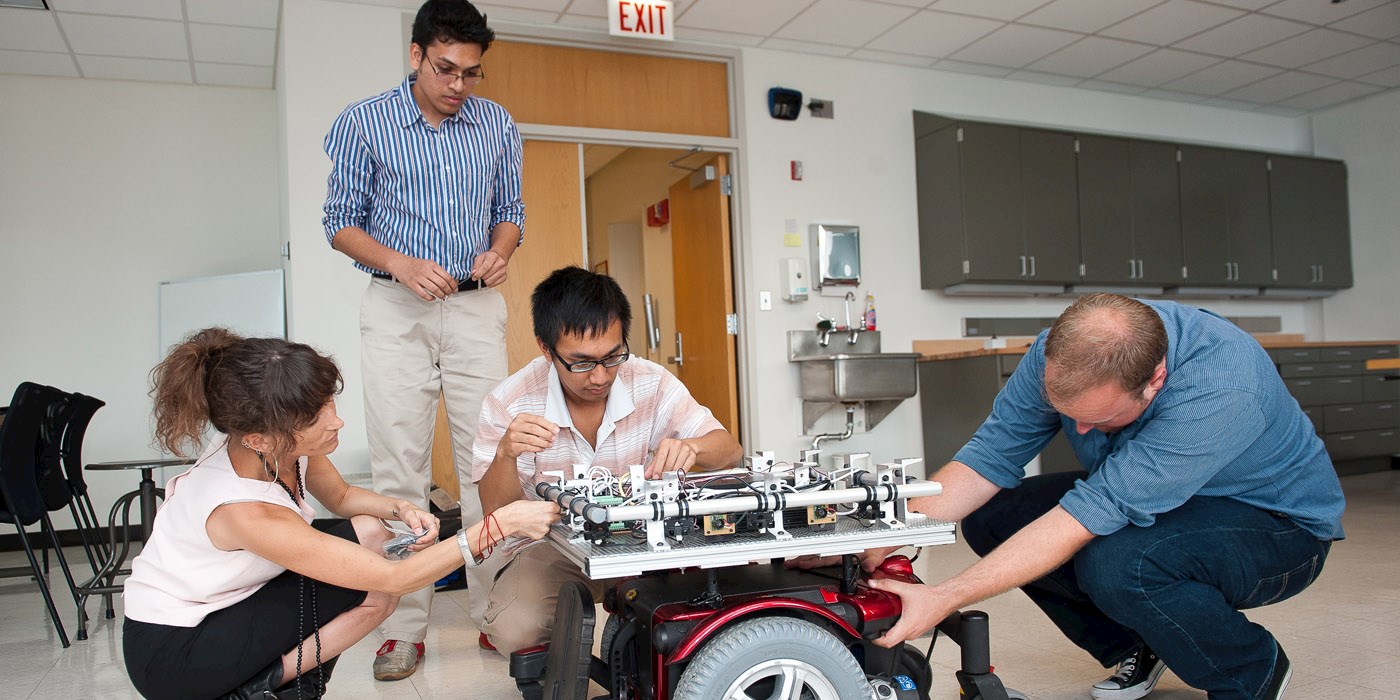When Brenna Argall steps onto the elevator each morning on her way to the 17th floor of the Rehabilitation Institute of Chicago (RIC), she’s reminded why she’s developing the first autonomously operating wheelchair for people with severe disabilities. She watches patients struggle to manipulate wheelchair joysticks or sip-and-puff controls with the hope of making it through doorways and not bumping other people.
Argall, a Carnegie Mellon University alumna, believes that by melding robot technology with rehabilitation science, her team at the RIC — ranked Best Hospital for Rehabilitation by U.S. News — can help people gain control of their machinery and their lives.
Wheelchairs, robotic arms and other assistance technologies can be difficult to maneuver. Worse, as patients’ conditions deteriorate their ability to manipulate these supports lessens. The research by Argall — who is an assistant professor at Northwestern University — will enable a human and robot to share the “control burden” as circumstances change. Over time, an autonomous machine learns to take the controls when necessary, such as to avoid an obstacle and relinquish control when possible to help a patient rehabilitate.
“I see this as a sort of flexible autonomy that helps people feel like they’re operating the machine on their own, but also, as they regain ability, that support might also disappear,” Argall said.
It was a CMU undergraduate mathematics course that launched Argall’s interest in robotics. Under the guidance of James Greenberg, now professor emeritus, Argall helped lead a student team to design and complete a traffic modeling study. She delegated tasks and served as lead writer.
The group submitted findings to one of the field’s leading journals, which accepted the work. As an undergraduate, Argall had published her first refereed paper.
Furthermore, the editor said no further changes were necessary.
“I haven’t had that happen in my whole career,” Greenberg said. “That was impressive. In terms of organization, and coming up with a deliverable, Brenna was clearly the best.”
Upon completing her bachelor’s degree in mathematics in 2002 from CMU’s Mellon College of Science, she held a computational biology position in the Laboratory of Brain and Cognition, at the National Institutes of Health, where she worked closely with Michael Beauchamp, who today is the Director of Research in the Department of Neurosurgery at the Baylor College of Medicine. “She was the best research assistant I ever had,” he recalled.
After the NIH, she went on to earn graduate degrees in robotics from CMU’s School of Computer Science (master’s degree in 2006 and Ph.D. in 2009). Five years ago, she began her work at RIC and she continues to collaborate with CMU’s Robotics Institute.
“Brenna serves as an indispensable bridge between roboticists like me and doctors and occupational therapists,” said acclaimed CMU roboticist and research collaborator Siddhartha Srinivasa.
Argall hopes to bring an affordable autonomous wheelchair to market within five years. Making that happen will require more bridge-building with manufacturers and insurance companies. Fortunately, she said sensors and related technology are becoming less expensive, and wheelchairs can be customized to adjust for needs and cost. Meanwhile, she sees work from her lab applying to other platforms that could blend control, such as fighter jets and cranes.
From RIC, Argall is uniquely positioned to advance this project as she conducts tests there with outpatients, who put a face on who she’s helping.
“It’s easy to keep motivated,” she said.
Footnotes
Photo: Argall and her students work on the argallab's robotic wheelchair. Photo credit: C. Jason Brown




